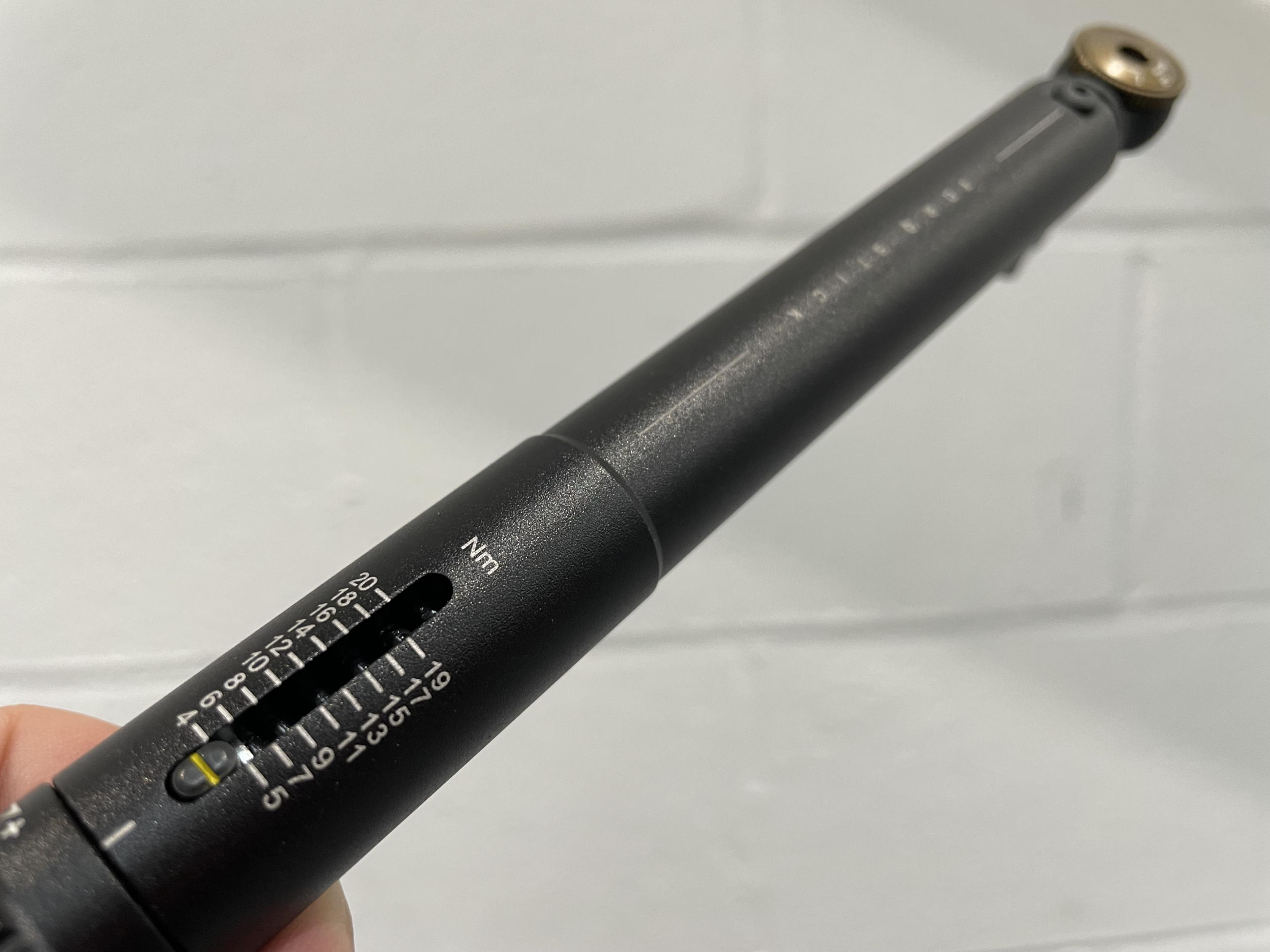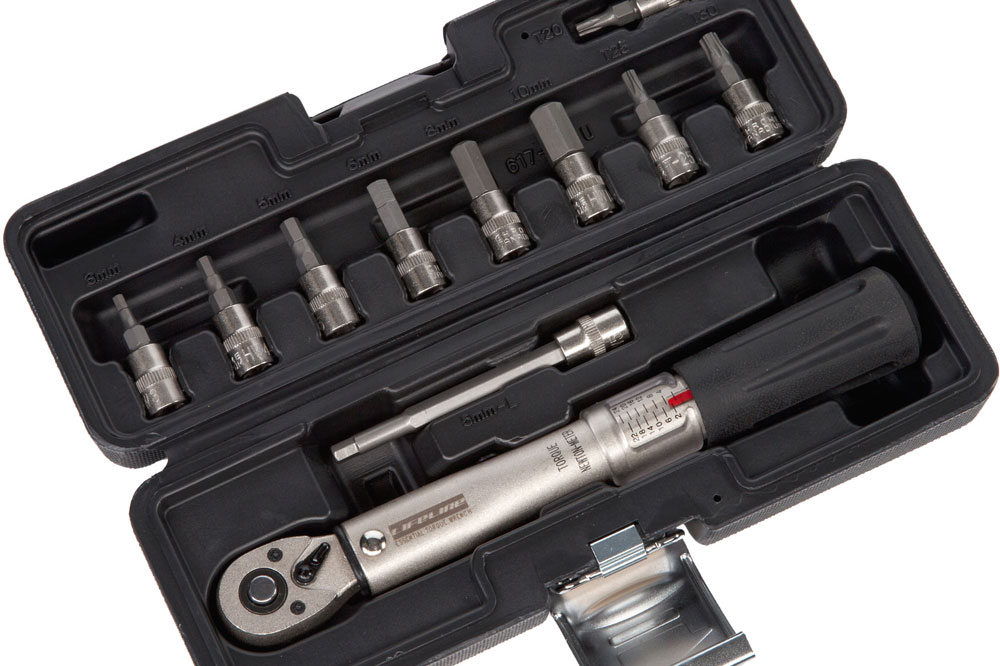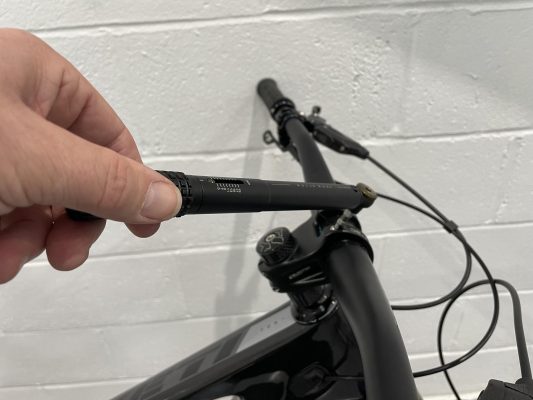Keep your bike running sweetly and avoid rattles, noises, and possible damage by accurately tightening up bolts with a torque wrench.
There’s a couple of hundred bolts on the average mountain bike and every single one of them has a recommended torque setting. This simply means they have an optimum tightness, which is just enough to hold whatever it is in place but not too much as to damage the fastener or the part it’s attached to.
To achieve the correct torque, you’ll a specialist tool called, unsurprisingly enough, a torque wrench, and we’ve selected the best torque wrenches for mountain bikes we could find.

1. Park Tool TW-5.2 Ratcheting Click-Type Torque Wrench
Best workshop quality torque wrench
Units: Nm (conversion scale on side) | Drive: 3/8in | Torque range: 2 – 14Nm | Rating: N/A
Reasons to buy:
- Sturdy
- Long handle
- Comes with plastic carry case
Reasons to avoid:
- Only calibrated in Nm
The TW-5.2 from Park Tool is a conventional ratcheting torque wrench designed for the lower torque settings that you typically find on bike components. It features a 3/8in drive, which makes it compatible with loads of regular sockets, and has a simple dial adjustment system and a window display so can set your maximum torque accurately and quickly. It has torque range from 2-14Nm adjustable in 0.2Nm increments and is accurate to +/- 4%. It’s only calibrated in Nm but there’s a conversion scale on the body of the tool for those that work in in/ft lbs. It’s a sturdy tool with a long 230mm handle and also comes in a plastic carry case.

The Topeak Torq Stick is well made and comes with just the right range for most bicycle applicatons.
2. Topeak Torq Stick
Best compact torque wrench
Units: Nm | Torque range: 4 – 20Nm | Rating: N/A
Reasons to buy:
- Good length for getting to hard-to-reach areas
- Reverse drive option
Reasons to avoid:
- No carry case
- Scale is very small and hard to read
Topeak’s Torq Stick is neat and boasts a quality construction. Being fairly compact, it takes up a lot less space than many general torque wrenches you find in hardware stores. Although it has a wide torque range, from 4-20Nm, and there are several pre-sets at common torque values, the scale is quite small. Unlike the Park Tool TW-5.2 there are no in-between gradients. It does come with a hex-drive and includes six Allen key and three Torx bits to cover most bike applications. Using a dial on the head of the Torq Stick allows the drive to be reversed for use on left or right-handed threaded bolts. A nice touch is these are also 30mm in length for getting into those hard-to-reach areas, but unfortunately there’s no carry case included.

3. Bontrager Preset 5Nm Torque Wrench
Best budget torque wrench
Units: Nm | Hex: 4mm fixed | Torque range: 5Nm | Rating: N/A
Reasons to buy:
- Simple
- Cheap
- Effective
Reasons to avoid:
- Limited use to only 3mm or 5mm stem bolts
If you only need a basic torque wrench for checking stem bolts and the like, the Bontrager Preset 5Nm is a good option. You can’t adjust this torque value, so it has to correspond with the components you have on your bike, but it’s a simple tool that is easy to use and is pretty robust; we have a few of these floating around in our workshop tool drawers. The other limiting factor is the 4mm hex bit is fixed permanently in the tool, so again, if you have 3 or 5mm stem bolts this isn’t going to work for you.
How we test
When testing torque wrenches, we look at ease of use and cost. Some of the easiest to use have a fixed torque setting with a permanent Allen key bit installed, usually a 4mm. These are inexpensive £20-30 but they’re limited application and will only last as long as the bit on the end.
Fully adjustable tools are more complex and more expensive. The key feature here is the bit holder or driver which will either be 3/8 or 1/4in drive (like a socket set) or a hex fitting. With the complex tools you want a good adjustment range and also a carry case because this is a precision instrument, not something you should have rolling around in your tool box.

Use a torque wrench for everything from seat clamps to pivot bolts.
Are Torque Wrenches all the same?
Torque wrenches are split into two types – ratcheting or ‘socket set’ style that you lever up and down like a spanner and screwdriver designs, which often have T-shaped handles. The latter are also split into pre-set and adjustable and there’s a further subset where the bit is interchangeable or fixed permanently. The reason for these restrictions is because these small torque tools are designed to tighten one component, the stem.
All of the ‘socket set’ style torque wrenches have interchangeable bits and are fully adjustable from around 2-14Nm, but are typically more expensive, expect to pay upwards of a £100.
Why should I use a Torque Wrench?
The main reason to tighten a bot to the correct torque is for safety. If you over tighten a bolt, it can break or damage the part it’s attached to. Conversely if it’s not tight enough, it can work loose, which can accelerate wear or cause a failure. A loose bolt on a saddle clamp will only cause it to creak or move when you sit on it but there are situations where it can cause damage to the bolt. One of the most common bolts to come loose is the one holding your crank in place and if you keep on riding this can mangle the interface and mean costly replacement.
The other advantage with using a torque is you don’t have to guess how tight things should be. The old school way is hand tight and then another quarter turn but what does that actually mean? If a seat clam bolt has a torque setting of 5nm and you use a 5nm pre-set torque wrench, you’re never going to over or under tighten it, and also you won’t have to touch it again.

How to use a torque wrench
A pre-set torque wrench is pretty easy if the value matches the bolt you’re attempting to tighten. You twist the tool until it breaks free, you’ll know this when you feel it. Don’t be tempted to give it another quarter because you can still over tighten bolts using a torque wrench because most don’t full give up the ghost if you push past the release point.
An adjustable torque wrench release in exactly the same way, you just adjust the dial to match the torque setting on the bolt first.
How do I know how much torque to use?
Most components, suspension pivots and the like have the torque written next to the bolt in question. If it’s not there it’ll be in the owner’s manual, or you can find it on the manufacturer website.
As a general rule bigger the bolt the higher the torque. Stem bolts have a typical torque value of 4-5Nm, suspension pivots can be anything from 5-8Nm and cranks are 11-13Nm. It’s also worth noting that just because there’s no bolt doesn’t mean that component doesn’t have a torque setting – a cassette lockring for example should tighten to around 40Nm. Then again sometimes erring on the side of caution is a good idea, especially when it comes to pedals.
What does Nm mean?
Torque wrenches are calibrated in Nm (Newton-metres, which is a unit of torque of momentum) but you’ll also see Ft/lb or In/lbs. One is metric and the other is imperial. Fasteners often have both values written next to them.
Can I use it incorrectly?
One of the common problems is when tightening a component with two or more fasteners side by side, like on a stem. The best practice is to gently snug up the bolts evenly with an Allen tool first and then go in with the torque wrench to finish things off. If you tighten one bolt all the way to the correct torque and then tighten the other bolt in the same way, it can actually reduce the torque on the first one.
You should also follow the same alternating process when loosening bolts, especially with crank arms and stem face plates.
















